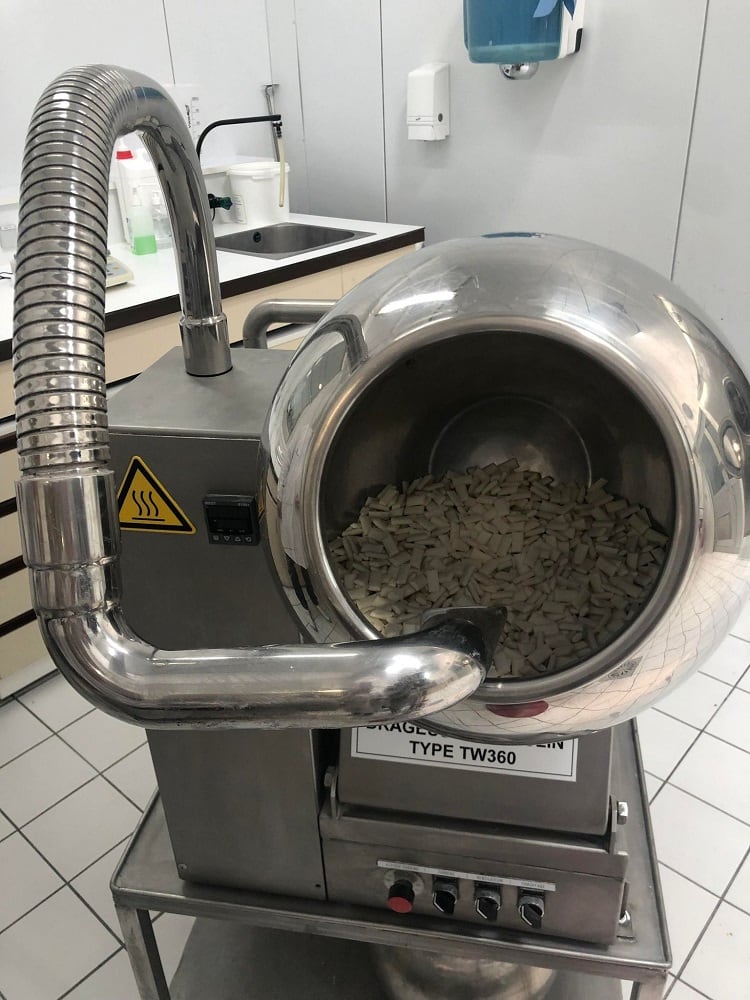Roquette is an ingredients company focusing on food and pharmaceuticals. In its food operations, it supplies proteins, fibres, polyols and starches to a wide range of food manufacturers.
With an investment of €4.5 million, the new facility is a key part of the company’s Research and Development global network and is part of Roquette's 150-hectare plant in Lestrem.
The company has now opened an innovation centre for food ingredients, one of six such centres which are spread over the world (the others being in India, China, Singapore, Japan and the US). “The appetite for innovation is really part of our DNA,” said Pascal Leroy, Senior Executive Vice President at Roquette.
The company now aims to be a ‘trusted partner’ to food industry players in addressing major global challenges such as population growth, aging, and demand for new, healthier and more sustainable diets.
The facility will provide formulators with a large range of capabilities, including technical and R&D support, cutting-edge equipment, labs and scale-up testing. The ultimate goal is to foster innovation and accelerate the go-to-market of new products.
The centre has been designed to support food players by offering a huge range of capabilities, where Roquette experts will provide advice and solutions to their process and formulation challenges. It includes a demonstration kitchen, a sensory analysis laboratory, various collaborative spaces and labs allowing pilot scale testing for different food applications. All food sectors including dairy, savoury, confectionery, bakery, beverage, or specialized nutrition, will benefit from these new capabilities, the company stressed.
“We see this opening as an innovation boost for the global food sector. Our group is proud to unveil this amazing new facility and help meet the demand in Europe and all around the world. This new Food Innovation Center will provide our customers with the plant-based ingredients and capabilities they need to overcome challenges in their product development process, enabling them to move forward more quickly and effectively,” said Leroy.

The centre, which is staffed by more than 30 engineers, doctors and technicians, tests the application of just a handful of raw ingredients – prominently pea protein, wheat protein, soluble fibres, polyols and starches – in a vast range of products.
Plant-based protein
One of the main sources of alternative protein used by Roquette is pea protein. One of the benefits of pea protein is its versatility – Roquette has included it in a vast array of products, from milk alternatives to plant-based meat to even biscuits.
“For pea protein what we are looking for at Roquette is to be sure that it's easy to use,” Leroy told FoodNavigator. “This is really how we have the capability to design the right functionality to be easily incorporated in the final product. This is key to our customers.”
While pea protein has historically been linked to a ‘bitter’ or ‘earthy’ aftertaste, Leroy assured us that “we try to make it as neutral as possible.”
As well as the versatility, the pea is also sustainable and provides a significant level of protein. “The pea is a fantastic plant,” Leroy told us, “it is using almost no water to grow, so that's really a kind of ultra-sustainable crop and that's why we love it. On top of this there is some 25% of protein in the pea.”
Fibre
Roquette showed FoodNavigator the ovens where it creates bakery products, such as low-sugar muffins. These muffins also boast a high fibre content, as part of the sugar is replaced with soluble wheat fibres, a technique that Roquette uses in many of its low-sugar products.
Indeed, the company uses fibre in a wide range of products in general. “We have fibre in dairy, we have fibre in confectionary,” Routier told us. “So we can really use this ingredient well among our whole food segment.”
Fibre is key for health. “You're aware of what we call the fibre gap in our diets, so this is really a growing market for us,” Leroy told us. The fibre gap is the gap between the recommended amount of fibre humans should be consuming, and how much we actually consume. “We always try to optimise the ingredient: its function; its value. And again, it has versatile applications.”
Leroy pointed out that soluble fibres were not only good for the health but ‘easy to formulate’, meaning that they can be used in a wide variety of products.
Roquette also has a range of confectionary tested in the plant. One of these products is jellies, both gelatine-based and non-gelatine based.
The jellies are put in a starch mould and set for around two to three days. In the lab, they can be tested with or without gelatine, enriched with fibre and have the sugar reduced. They are also tested for elasticity, stickiness, and crunch.

Polyols
Roquette uses polyols in a wide range of ingredients. Roquette revealed the production process of its sugar-free chewing gum, as well as tablets; one was mojito flavour.
Chewing gum is composed of sweeteners, a gum base to provide elasticity, and a flavour (such as mint). The ingredients are blended and then cut into rectangles and coated with a succession of thin layers of syrups.
FoodNavigator saw the machine that provides chewing gum with its coat, as well as the chewing gum before and after the process. Before being coated, the surface was sandpaper-rough, but once the process was complete, it had the typical sheen and smoothness that one expects from chewing gum.
“You laminate it, cut it into small pieces, and then after a resting time it will be coated with several layers of syrup to get a chewing gum which is white, which is really crunchy and stable,” Roquette told us.

With a range of different polyols, Roquette can develop different recipes with different textures. “Depending on the ingredients that we use we can produce a different effect so that also way to create a wide range of sensory experiences.”
Different flavours are popular in different markets. For example, grape flavour is popular in Asia. However, mint is one flavour that is popular pretty much everywhere.
Polyols can be used not just in the context of different gums and tablets, but in sugar-free cookies as well. The polyol allows them to (nearly) match the taste and texture of a cookie which contains sugar.
Dairy
Roquette makes a wide range of dairy alternatives, from cheese to ice cream. Like with the plant-based meat, it uses the same equipment as the animal protein industry uses for the animal equivalent, and often include pea protein.
By using fibre and pea protein, dairy products, even normally unhealthy ones, can be made both more sustainable and healthier. “Ice cream is the most indulgent product, especially at this moment of the year,” Roquette told us.
“But you can also improve its taste profile and its nutritional profile by adding fibres to decrease the level of sugar, and we can also work on [and] realise a plant-based ice cream with the same sensory result. It’s better for the planet and better for you.”
Getting the right colour is vital in foods such as plant-based dairy. Roquette explained why it adds colours to influence flavour.
“If you see that your milk is brown,” Roquette told us, it won’t taste the same. “Milk needs to taste white.” If it’s brown, “it means you are even not tasting it. Your brain you are being influenced by what you see. That's why we add those colours.”
Tasting the food
At the end of the tour, Roquette emphasised the importance of collaboration between scientists and the culinary world. The centre’s staff, of course, are scientists, so they hire professional chefs to create recipes with the food they had developed, testing out their developments in the kitchen. One, a small curry dish, was served to the guests at the facility.
The centre also offers new state-of-the-art equipment such as a high-moisture extrusion (HME), an ultra-high temperature (UHT) line with direct steam injection for dairy and beverage applications, as well as a tableting press simulator.
Isabelle Routier, Head of Food Customer Technical Services, added: “The ultimate goal of the Food Innovation Center is to partner with food industry players to speed up innovation, from the earliest stage of product development. To ensure this is possible, the teams can rely upon a worldwide network, as well as in-house expertise, co-development sessions, and technical training. The site was also designed to facilitate knowledge and know-how development, capture and sharing.”



